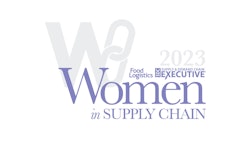
The effectiveness of supply chain operations has historically been at the mercy of outside forces. The pandemic was the ultimate outside force and it redefined expectations. Now, it's imperative organizations get ahead of any issue to ensure agreements and deliveries are met — despite events outside of their control.
Unfortunately, new problems continue to emerge that impact the movement of goods. For example, port congestion recently eased in Los Angeles after being a major headache for months. But stalled contract agreements with dock workers are now pushing goods to the East Coast, shifting cargo flows and influencing delivery times. There could also be a greater fear of goods moved by rail in the near future, especially after the train derailment in East Palestine, Ohio, which spilled extremely hazardous materials and displaced hundreds of residents.
Manufacturers rank supply chain challenges as a top concern in 2023 as they battle stubbornly high prices. This constant market volatility leaves more than half of logistics managers to not expect normalcy in their supply chain until at least 2024. And 29% said it might not happen until after 2025 — if ever again.
Supply chain disruptions, in some fashion, are here to stay. It’s just the manner of those disruptions that is constantly changing. How can organizations get ahead of disruption and future-proof their supply chain, with little idea as to what’s on the horizon? Here’s a playbook you can lean on to step up your strategy and mitigate future threats.
Learn from the past
A key way to bolster supply chain operations is to understand the lessons from past disruptions. In recent years, blank sailings, port congestion and trucker shortages (which still impact delivery times) significantly diminished the efficiency and effectiveness of supply chain operations. The lesson to take from that? Pivoting on the fly is of paramount importance to fulfill contracts, retain clientele and meet customer demands.
You should prioritize that agility by diversifying product sourcing, carrier options, and route offerings. It ensures goods keep moving to their final destination and greatly reduces the potential for backlogged freight. Nearshoring and other semi-local outsourcing tactics help, too. Having operations in a country closer to the import destination helps quickly solve issues and still gives organizations the cost savings associated with offshore production.
Another lesson to account for is the rapid shift in consumer demands. Amazon surged during the pandemic with its quick delivery turnarounds, and consumers now expect that speediness from every brand they shop — 90% expect two- or three-day shipping to be standard and 32% of global shoppers will abandon their carts if an estimated shipping time was too long. Amazon taught us all that organizations must be open to expanding their footprint. It boosts operational agility during unexpected disruptions, ensures rising consumer expectations are met and drives growth.
Be open to adopting emerging trends
It’s not enough to just be aware of industry trends; you need to adopt some of them that can help improve your operations.
One such trend to keep up with is emerging technologies. Not only does technology give you greater visibility into operations (something only 13% can currently map), but it modernizes day-to-day tasks and automates monotonous duties to improve overall efficiency. Artificial intelligence, machine learning and Internet of Things (IoT) devices are evolving tools that have woven themselves into multiple industries. You need to be ready to implement it, too. Also keep an eye on new technologies that aid in last-mile delivery, which could soon include drones or autonomous vehicles. It will also be crucial to utilize data analytics to gain insights into supply chain performance.
However, technology growth demands an increased focus on security and risk management. The 2023 BSI Supply Chain Risks Insights Report says that organizations see cyber vulnerability and ransomware as the most important issue “in the short, medium and long term.” Greater attention must be given to security issues as hackers fine-tune their tactics. You can prepare by making the appropriate investments into IT teams and cyber safety training.
There is also a growing trend toward a consumer-focused approach. We know customers expect quicker deliveries, so you need to adjust fulfillment operations to be faster and meet this demand. But today’s consumer-focused strategy also requires a shift to more sustainable and socially responsible practices. According to HubSpot, 66% of consumers say organizations should try to reduce their environmental impact. This matters to them more than ever before: That same survey found that 46% of consumers say they are more likely to purchase from an organization that actively tries to reduce its carbon footprint. Sustainability has become a way to keep your customers and attract new ones.
Preparing your supply chain based on past events and current customer trends is the best way to future-proof operations. This agility puts you a step ahead in bolstering and managing your supply chain operations to ensure resiliency in the face of volatility. You may not know what the next industry shake-up is, but you can put yourself in the position to handle it.








